Where to Find Bamboo in Michigan
Bamboo does not grow natively in Michigan. Many aspects of the state’s climate make it an inhospitable place for bamboo plants to grow. Bamboo, which is native to warm, tropical climates, may struggle to thrive, especially during the long, dark, and cold Michigan winters. However, if you choose the right species, it may be possible for you to successfully grow bamboo in Michigan and its neighboring midwestern states. Before you plant a bamboo grove in your home garden or yard, consider consulting with local experts who can advise you on how to grow bamboo in a way that fits the state’s climate and other environmental conditions.
To help you do that, this article reviews some of the biggest challenges and considerations for you to keep in mind when growing bamboo in Michigan. You can also read about some of the potential benefits of growing bamboo and gain some tips for growing these versatile plants in Michigan’s climate. Lastly, this article seeks to connect you with opportunities to see bamboo growing locally and learn from horticulturalists and other plant experts who are familiar with the intimate details of growing bamboo in states like Michigan.
Since bamboo plants are flexible, resilient, and relatively easy to cultivate, with the right advice and preparation, you may find that bamboo plants can be a great addition to your yard or garden. Let’s dive in now, starting with the basics of the many different bamboo plants in the world.
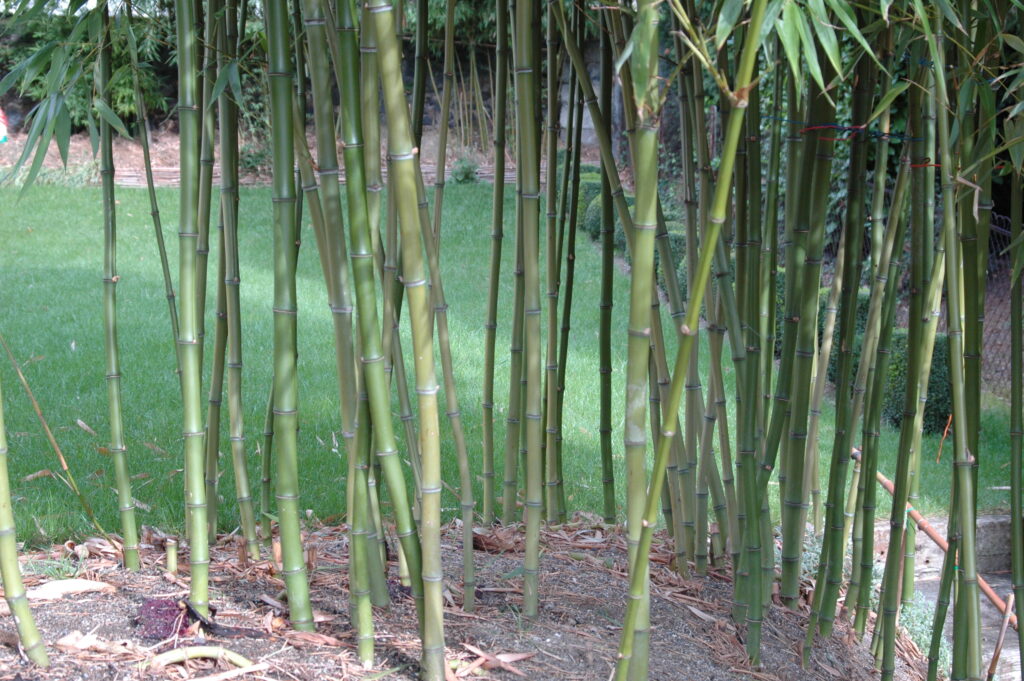
©Legmiche, CC BY-SA 4.0 <https://ift.tt/n7Hj5EX>, via Wikimedia Commons – License
About Bamboo
Many species of bamboo come from hot and humid tropical climates, but numerous bamboo species grow in a range of environments. Some of these species are cold-tolerant and can handle many different weather conditions. There are more than 1,000 and potentially as many as 2,000 different species of bamboo. These belong to over 100 genera, the majority of which are members of the grass family Poaceae. These grasses are typically tall, thin stalks (called “culms”), topped with lush green foliage. Bamboo plants come in a vast range of sizes, colors, growth rates, and more. Some species of bamboo are tiny dwarf plants, while others reach staggering heights of over 100 feet. Which type of bamboo you plant depends on what you hope to use it for, your desired appearance, and where you live.
If planting in Michigan, it is vital to choose a cold-hardy species. These could include Phyllostachys aureosulcata (yellow groove bamboo), Phyllostachys bissetiiI (Bisset bamboo), Phyllostachys nigra (black bamboo), or Fargesia robusta (a clumping bamboo species). In particular, many species in the Phyllostachys and Fargesia genera grow well in parts of the United States that have cold weather.
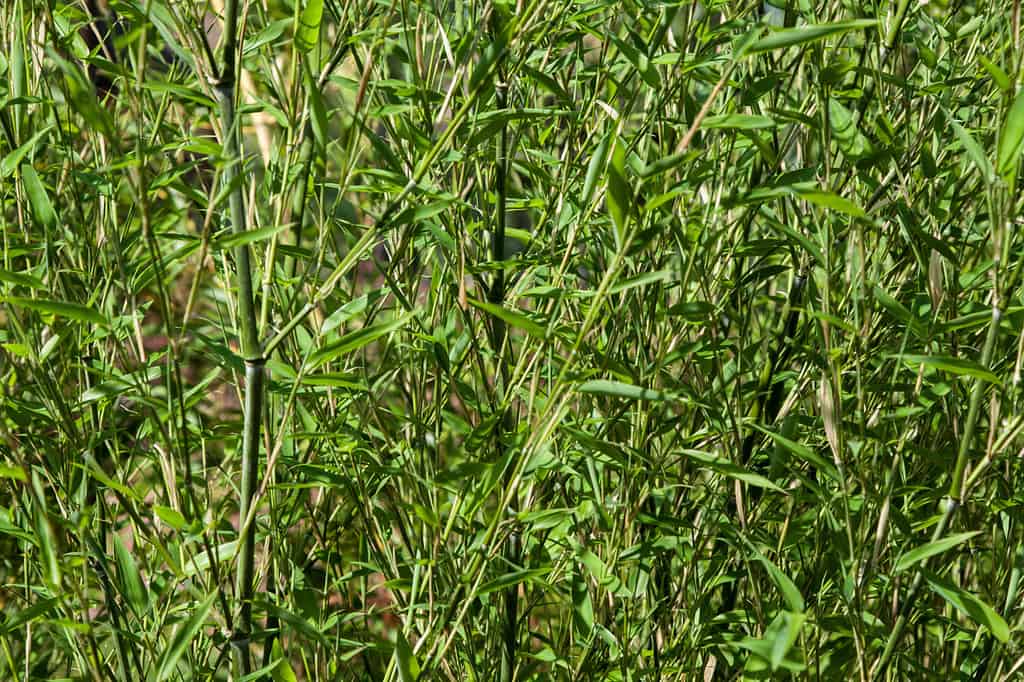
©Ketta/Shutterstock.com
Uses for Bamboo
Bamboo has historically been cultivated across the globe, coming from Asian countries like China but widely grown in other parts of Asia, Europe, South America, North America, and Africa. Bamboo gained popularity in Europe and North America as an ornamental plant. Today, it is still a key feature in many Japanese and Chinese garden landscape architecture. However, bamboo has a much greater number of applications and has historically been used for food, in traditional cultural practices, for building construction, and in producing numerous products – from chopsticks to paper to textiles.
As a popular landscaping plant, many of the most popular bamboo species in the U.S. originate in Asia. This means that they are not native to North America, and can be a potentially-harmful invasive species that threatens to damage local ecosystems. When planting bamboo in Michigan, gardeners must proceed with caution to ensure the bamboo stays in control. However, when planted carefully and with intention, bamboo plants can be beautiful and beneficial landscaping plants. Let’s cover a few of the challenges of growing bamboo in Michigan now before then reviewing a few of the benefits.
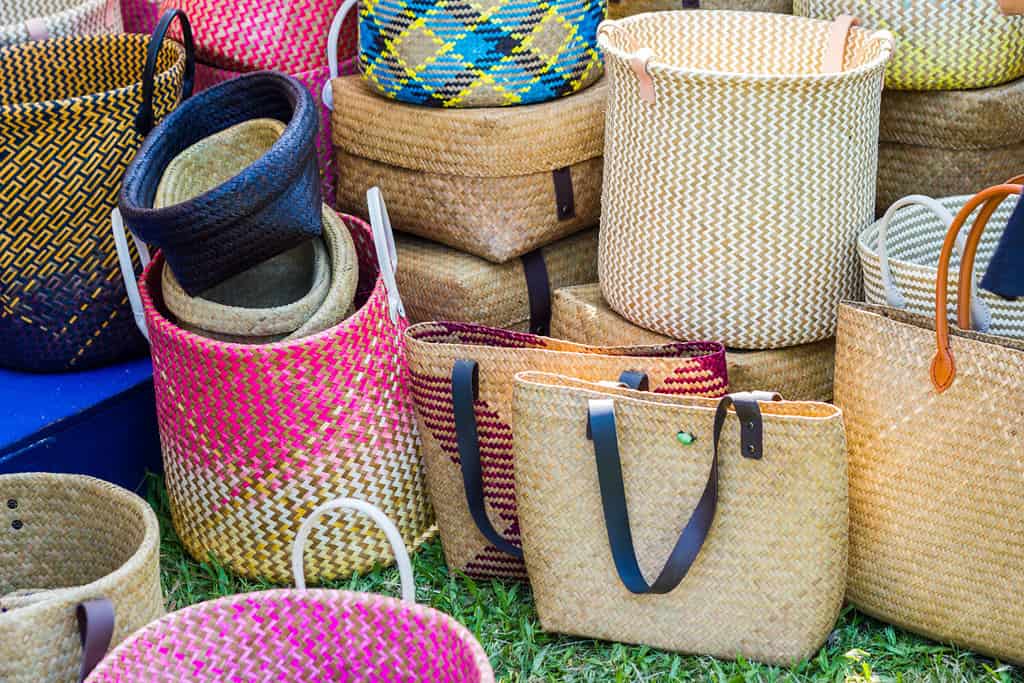
©junpiiiiiiiiiii/Shutterstock.com
Challenges of Growing Bamboo in Michigan
Before you decide to plant bamboo in Michigan, you should consider several challenges that you will likely encounter. Many of these challenges relate to the climate and broader ecosystem in the state and include the cold temperatures, winter snow and ice, drought, lack of consistent water, soil conditions, and the impact of wind.
Top Challenges of Growing Bamboo in Michigan
First, Michigan winters are known for having extremely cold temperatures. The long, cold winters, which usually feature large amounts of snow and ice, threaten bamboo’s health and longevity. Since many bamboo species are native to warm, sunny, tropical environments, they may struggle to thrive in cold temperatures and prolonged periods without sun. To mitigate this, you should choose a cold-tolerant species.
Second, during the cold Michigan winters, bamboo planted outdoors will doubtlessly encounter snow and ice. Under the weight of icicles or heavy snowfall, thin bamboo stalks may bend and break. This can both damage the existing plant stalks and interrupt young plant growth. Similarly, during storms, Michigan can have high winds. Michigan’s location in the Great Lakes Region can cause high winds and dramatic winter storms.
Third, bamboo typically grows best in moist, well-drained, and fertile soil rich in organic matter. Since Michigan’s soil varies across the state, you may want to test your soil and amend it as necessary to provide the best soil in which your bamboo can thrive. However, since Michigan’s summers can be very dry, you may also want to develop an irrigation system or other watering process to ensure your bamboo plants stay adequately hydrated and do not dry out.
To overcome these challenges, choose the right bamboo species, insulate or bring your bamboo indoors during the winter, prepare the soil, and make sure your plants have sufficient water. Additionally, to ensure that your plants do not spread and invade the local ecosystem, consider planting in a container or using underground barriers to prevent the bamboo’s spread.
How to Grow Bamboo in Michigan
Keep these factors in mind before deciding to plant bamboo in Michigan, and plan accordingly.
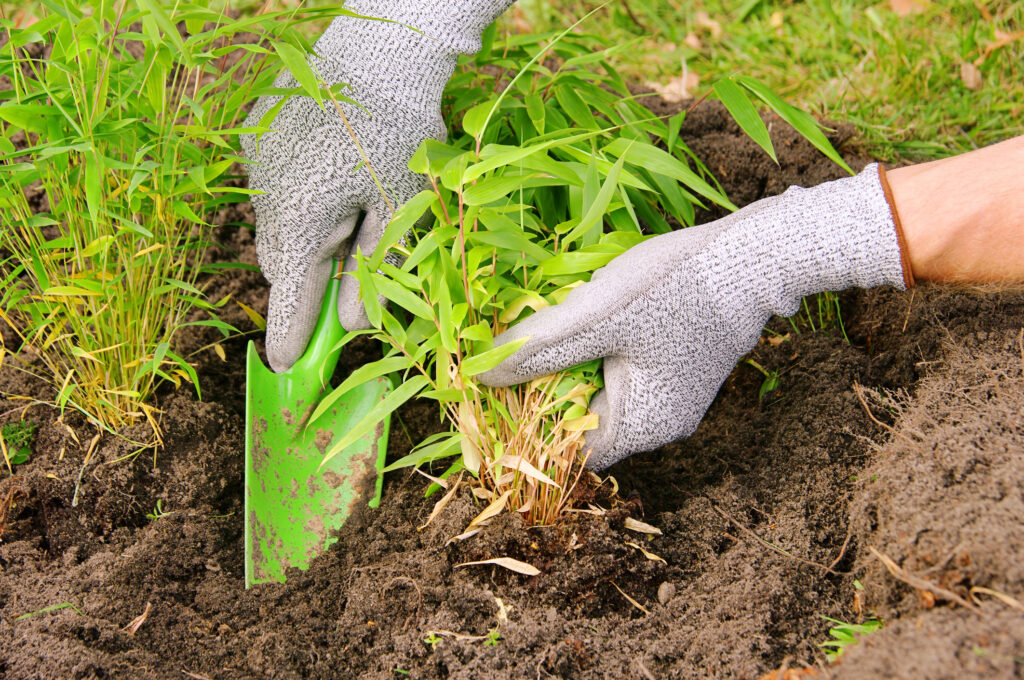
©iStock.com/LianeM
First, choose a cold-hardy bamboo species that will be robust enough to survive the cold Michigan winter. You may want to think about ways to shelter your bamboo from the wind. It may also be wise to cover or insulate the plants during the coldest winter months. You can use mulch to help the plants’ roots retain moisture and to make them more resilient in the cold. You can also consider planting your bamboo in pots that may be transported indoors or to a garage during the winter. A few bamboo species that may grow well in Michigan include Phyllostachys nigra, Fargesia murielae, or Phyllostachys aurea, among others. Which you select may depend on your specific part of Michigan, the soil and garden conditions, and where you intend to plant it.
Fertilize and Compost
Second, prepare your soil with fertilizer or compost and choose a planting location that has well-draining soil. If you plant a clumping bamboo species, ensure there is space for the roots to spread out. If you choose a running bamboo, consider using a pot or container that can prevent the bamboo from sending out underground rhizomes that could spread beyond your control. When you place your bamboo in a hole in the soil, ensure it stays moist.
Monitor and Maintain
From there, regularly monitor and maintain your bamboo. Prune it when necessary, remove dead or damaged culms, and check regularly for pests or diseases that could damage the foliage or culms. However, in addition to this, it is a good idea to consult with local experts who know your area well and can give you advice tailored to your needs and the local conditions.
Bamboo Arboretums and Gardens in Michigan
Visiting a bamboo garden or arboretum can be a great way to get inspired and learn how to help your bamboo thrive. Since many of these places are managed by horticulturalists and plant experts, visiting a garden or arboretum can also be a good way to connect with people who know what it will take to successfully grow bamboo in Michigan. If you are lucky, the places below may even allow you to see bamboo growing in all of its diversity. However, there is no guarantee that these places feature bamboo. Additionally, the list of gardens in Michigan is far from complete.
With that in mind, look for gardens, nature centers, and plant nurseries near you! Many botanical gardens and arboretums change their hours depending on the time of the year. They may also offer special events and exhibits that could be of interest to you. Because of that, before you visit, check out the linked websites or call to verify that they are open to the public and that the information included here is still up-to-date. From there, you can schedule a visit and begin learning all about growing bamboo in Michigan!
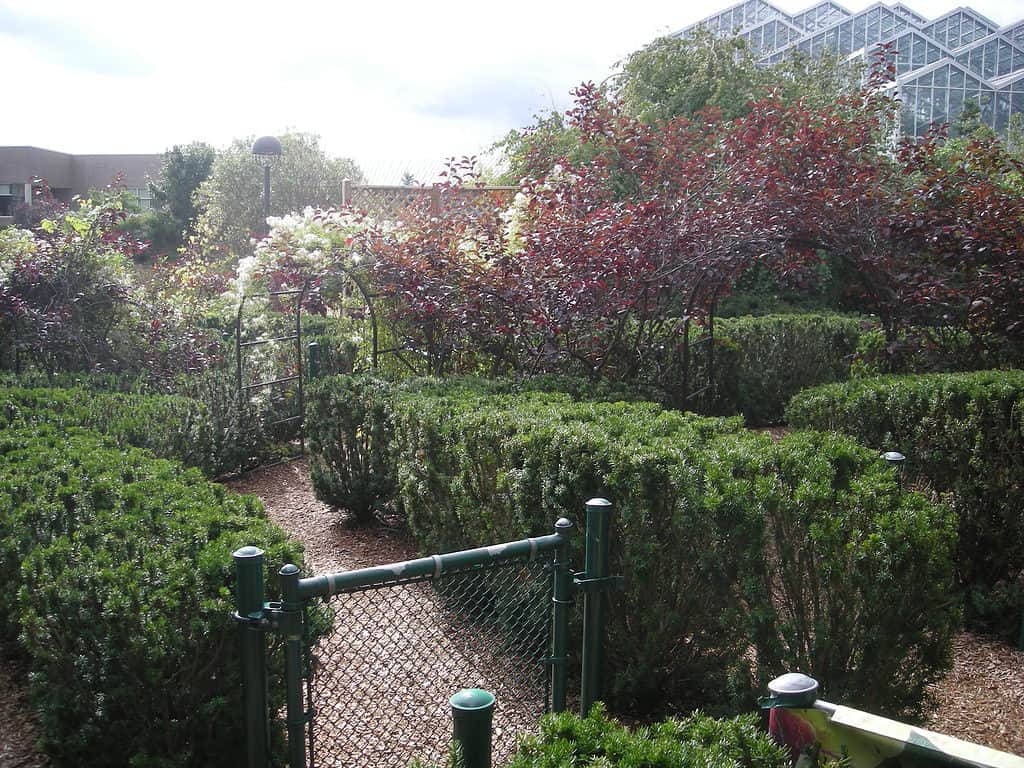
©3,072 × 2,304 pixels, file size: 1.35 MB, MIME type: image/jpeg – License
Frederik Meijer Gardens and Sculpture Park
The Frederik Meijer Gardens and Sculpture Park in Grand Rapids is an expansive botanical garden of 158 acres of gardens, sculptures, art galleries, a library, a cafe, and meeting spaces that cross from indoors to outdoors. The outdoor spaces include a nature trail and boardwalk, wetlands, a shade garden, and multiple special garden areas. The Meijer Gardens’ indoor spaces also include a tropical conservatory with many exotic plants, including Asiatic bamboo plants and other species from around the world.
The Frederik Meijer Gardens and Sculpture Park is open Monday through Saturday from 9 a.m. to 5 p.m. and on Sundays from 11 a.m. to 5 p.m., Tickets cost $20 for adults aged 14 to 64, $15 for seniors 65 and up, $10 for children aged 3 to 13, and $15 for students. Children aged 2 and under are free.
University of Michigan Matthaei Botanical Gardens and Nichols Arboretum (Ann Arbor)
The Matthaei Botanical Gardens and Nichols Arboretum at the University of Michigan in Ann Arbor are two interconnected botanical spaces. Together, they include a diverse collection of outdoor garden spaces, a conservatory, and a rich natural landscape. The Matthaei Botanical Gardens feature themed display gardens and a conservatory, which includes tropical plants including bamboo on display. In addition, the Nichols Arboretum offers trails, native plant gardens, and beautiful flower gardens.
The Matthaei Botanical Gardens and Nichols Arboretum are open to the public every day but Monday. The garden is open from 10 a.m. to 4:30 p.m. from Tuesday to Sunday and remains open until 8 p.m. on Wednesdays. The trails and natural areas are open every day of the week from sunrise to sunset. Admission is free for all.
Dow Gardens (Midland): This 110-acre botanical garden includes various garden spaces, including the historic Pineside Garden, the Whiting Forest Canopy Walk, and a large collection of native and exotic plant species. It also offers educational programs and events.
Michigan State University Horticulture Gardens
The Michigan State University Horticulture Gardens in East Lansing are 14 acres of diverse gardens for education and enjoyment by people of all ages. The gardens offer a diverse selection of plants to explore, including themed gardens, native plant collections, a conservatory, and a vegetable garden.
Fernwood Botanical Garden and Nature Preserve
Fernwood Botanical Garden and Nature Preserve in Niles is the place for all who love the outdoors. This special place includes 105 acres of gardens, woodlands, wetlands, and prairies. Fernwood features a diverse collection of plants, a butterfly house, and miles of walking and hiking trails. Among its garden displays are an herb garden, Japanese garden, rain garden, fern collection, and many others.
Fernwood’s 105 acres are open all year long. The garden hours are from 10 a.m. to 5 p.m. from Tuesday to Sunday.
Hidden Lake Gardens
Hidden Lake Gardens in Tipton) is a 755-acre botanical garden and arboretum that is part of Michigan State University. Not only does Hidden Lake Gardens showcase a variety of themed gardens and natural areas for hiking, but it is a regular source for educational programs and events. The gardens include a hosta hillside, a perennial garden, a bonsai garden, and a demonstration garden to view and engage with ongoing research. The conservatory allows visitors to engage with three separate biomes, including tropical plant species. Among the featured indoor plants are multiple species of bamboo, as well as other tropical species such as banana trees, cocoa, coffee, sugarcane, and more.
Please check the Hidden Lake Gardens website for updates on hours and other visitor information.
Other Places to Find Bamboo in Michigan
These are just a few of the botanical gardens you can visit and enjoy across the state of Michigan. Each garden offers its unique features, displays, and events. Visit to appreciate the beauty of plants and nature, and perhaps learn something about your local environment and how to cultivate bamboo too!
In addition to the botanical gardens, parks, and arboretums listed above, you may find other locations to see bamboo growing in Michigan. Since bamboo is such a popular feature of many home landscapes, you may be able to find private estates showcasing how to incorporate bamboo into a garden or lawn design. To gain the opportunity to tour some of these private estates, try looking online for events, garden tours, or horticultural societies. You could also look into commercial garden centers or plant nurseries, where you may be able to purchase bamboo or get advice on how other people have grown it in Michigan.
However, before planting bamboo, remember to investigate whether your city and state have any laws restricting which plants may be grown. Since bamboo is a potentially invasive species, it is a good idea to look into the local laws and talk to local plant experts who can give you advice on caring for the local ecosystem. The main concern, which most plant lovers share, is the need to prevent the bamboo from becoming invasive and spreading uncontrollably since this could harm native ecosystems.
The post Bamboo In Michigan appeared first on AZ Animals.
from Animal News, Facts, Rankings, and More! - AZ Animals https://ift.tt/Ke6qglU